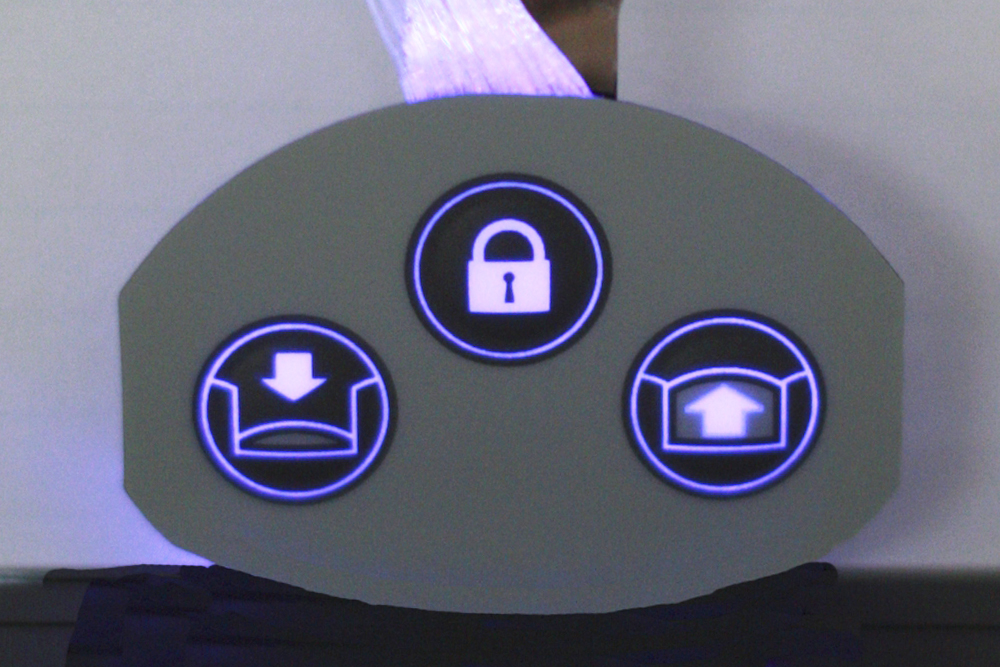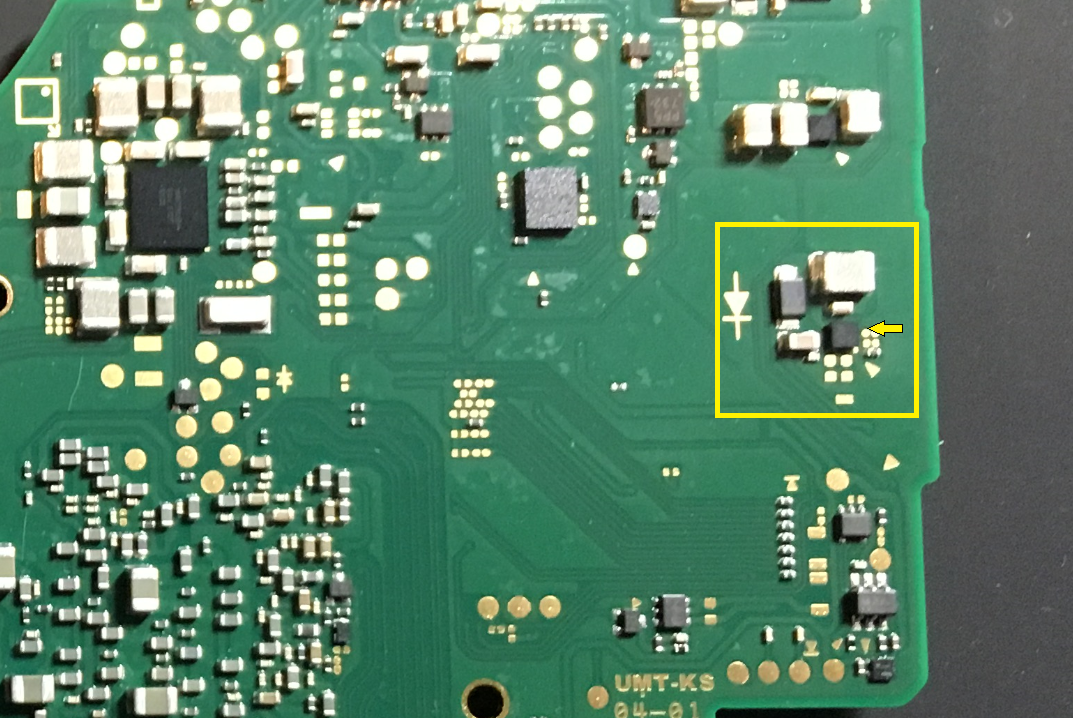The Manufacturing Refine Behind Change Backlighting: What You Need to Know
The production process behind switch backlighting entails elaborate steps that safeguard functionality and durability. From the choice of materials to the setting up of components, each phase is crucial. Automated equipment plays a considerable duty in incorporating LEDs and diffusive elements. Quality assurance measures better assure that the final item meets criteria. As personalization options broaden, the capacity for cutting-edge styles emerges. What aspects will form the future of switch backlighting technology?
Understanding Switch Over Backlighting Modern Technology
Button backlighting might appear like an easy attribute, it encompasses various innovations that enhance user experience in electronic devices. At its core, backlighting serves to illuminate buttons, making them visible in low-light settings. This functionality depends on various approaches, such as LED and fiber optic technologies, each offering one-of-a-kind benefits. LEDs are extensively preferred for their efficiency, durability, and dynamic colors, enabling for personalized illumination options. In comparison, optical fiber can develop a softer radiance, offering a more aesthetically pleasing appearance.Moreover, the integration of backlighting can improve individual ease of access, particularly for people with aesthetic problems. The layout of backlit buttons likewise takes into consideration power intake, as modern-day devices aim to balance illumination with battery life. Ultimately, the application of switch backlighting technology plays an important function in improving the use and charm of electronic devices, transforming normal interfaces into visually involving experiences.
Key Parts of Backlit Switches
The important elements of backlit buttons make up several essential aspects that function together to supply effective lighting and capability. At the core is the button system itself, which can be either mechanical or digital, permitting customer communication. Surrounding this device are LED lights, which offer the lighting essential for presence in low-light conditions. These LEDs are normally installed on a circuit board, assuring proper connection and power distribution.Additionally, a diffuser is commonly used to evenly disperse the light released by the LEDs, creating a consistent radiance across the switch surface area. The real estate of the switch plays a significant duty also, as it must secure internal elements while enabling light to travel through purposefully placed openings or transparent materials. Finally, a published visuals overlay might be related to share icons or text, boosting usability and visual appeals. Together, these elements ensure the performance of backlit buttons in different applications.
Material Choice for Toughness and Looks
Product selection plays a crucial role in stabilizing durability and aesthetic appeals in button backlighting. Key residential or commercial properties of products, such as resistance to put on and environmental elements, significantly affect their durable performance. In addition, visual design considerations have to straighten with functionality to produce visually attractive and durable products.
Key Product Characteristic
Sturdiness and appearances are crucial consider the product selection process for switch backlighting. The materials used need to stand up to mechanical tension, heats, and possible chemical direct exposure while preserving their visual allure. Typical choices consist of polycarbonate and acrylic, which provide robust effect resistance and optical quality. These materials can endure duplicated use without splitting or fading. Additionally, the selection of light diffusion buildings is crucial; materials need to effectively disperse light evenly to boost presence. Surface therapies, such as coatings, can additionally improve longevity and scrape resistance. Ultimately, choosing the best products guarantees that switch over backlighting carries out accurately with time, while likewise contributing to the general style and user experience.
Visual Layout Considerations

Resilient Efficiency Factors
The interaction between visual appeals and capability prolongs past visual appeal, incorporating the lasting performance of switch backlighting. Product choice is essential in achieving longevity and keeping visual top qualities with time. High-quality plastics, such as polycarbonate or ABS, are frequently chosen for their resistance to wear and environmental variables. In addition, the selection of LED parts influences durability, as superior-grade LEDs use boosted brightness and decreased heat outcome. Coatings, such as uv-resistant or anti-fingerprint surfaces, can even more secure against deterioration and discoloration. By incorporating robust materials and progressed technologies, manufacturers can ensure that button backlighting not only fulfills aesthetic requirements but additionally withstands the rigors of everyday use, eventually boosting customer fulfillment and item life expectancy.
The Setting Up Refine of Backlit Switches Over
The setting up procedure of backlit buttons includes careful part prep work techniques to establish compatibility and capability. A streamlined production line workflow is vital to optimize efficiency and reduce manufacturing time. In addition, durable top quality control measures are implemented to guarantee that each button fulfills market criteria and customer assumptions.
Component Prep Work Strategies
Efficient setting up of backlit switches starts with thorough prep work of their parts, ensuring that each component satisfies the needed specifications for functionality and sturdiness. This preparation process includes the choice of high-quality materials, such as sturdy plastics and efficient light-emitting diodes (LEDs) Each part undertakes comprehensive assessment and screening to identify any kind of problems that might impair efficiency. Additionally, parts may be pre-treated or coated to boost he said their strength against wear and tear. Switch Backlighting. Appropriate cleaning and managing methods are also critical to stop contamination before assembly. By implementing these part preparation strategies, makers can improve the setting up process, decrease the possibility of failures, and enhance the total high quality of the final backlit switch item
Assembly Line Operations
Enhancing the production line operations for backlit switches includes a collection of collaborated steps that assure each component is properly incorporated into the last product. The base of the button is positioned on the conveyor system, where automated machinery precisely positions the LED lights into the marked ports. Following this, a layer of diffusive material is included in ensure even light distribution. Next, the button cap is firmly attached, and electrical connections are made with accuracy to assure performance. Employees keep track of the procedure at numerous phases, looking for positioning and protected fittings. Ultimately, the set up buttons move to packaging, ready for shipment. Each step is developed to boost performance while keeping the integrity of the last item.

Quality Control Steps
Quality control actions in the setting up process of backlit switches are vital to confirm that each system meets strict efficiency and visual standards. At different phases of setting up, visual examinations are conducted to determine any type of issues in components, such as inappropriate LED positioning or malfunctioning soldering. Practical screening is executed to verify that the backlighting runs properly, with uniform brightness and color uniformity across each button. Furthermore, automated screening tools may be employed to look for electric honesty and responsiveness. Any units failing these assessments are remodelled or disposed of to keep quality control. Thorough documentation of these top quality checks likewise assists in traceability and continual enhancement, validating that producing techniques develop to meet consumer assumptions and market requirements.
Quality Control Actions in Manufacturing
While guaranteeing the integrity of switch backlighting manufacturing, makers carry out a selection of quality control measures to maintain high requirements. These steps incorporate several phases, starting with the choice of resources. Vendors are carefully vetted to ensure that only top notch components are made use of. During the manufacturing process, normal inspections are performed to determine any type of flaws or disparities in the backlighting systems.Automated screening devices plays a vital duty in assessing this page the capability and durability of the products. This consists of look for luminous intensity, shade precision, and lifespan. In addition, producers usually utilize statistical process control (copyright) techniques to monitor production variables, enabling for prompt adjustments when deviations take place. Post-production, final inspections guarantee that the completed products fulfill predefined specs before they are packaged and delivered. By adhering to these complete quality control measures, manufacturers can with confidence deliver dependable and high-performing switch backlighting options to their consumers.
Customization Options for Enhanced Customer Experience
A broad range of personalization options is available for switch backlighting, enabling users to boost their general experience. Individuals can choose from different colors, brightness degrees, and lights results to customize the backlighting to their preferences. Several suppliers offer software program that enables individuals to create vibrant lights profiles, which can change based upon usage scenarios, such as video gaming or keying. Some buttons also provide programmable attributes, allowing details tricks to illuminate in unique shades, aiding in performance and aesthetics.Furthermore, individuals may pick in between different kinds of products and finishes for the button housing, impacting both the feel and look of the backlighting. Transparent or transparent products can enhance light diffusion, developing an extra consistent glow. Eventually, these customization options cultivate a personalized interface that not only boosts use yet also mirrors specific design, contributing to a more engaging customer experience.
The Future of Switch Backlighting Innovations
As technology remains to advance, the future of button backlighting technologies is poised to supply a lot more innovative attributes and boosted user experiences. Arising fads suggest a change in the direction of flexible lights systems that change illumination and color based upon customer preferences and ambient conditions. This customization could improve use and availability, especially for those with aesthetic impairments.Furthermore, assimilation with clever home ecosystems offers the possibility for synchronized lights impacts that improve the general atmosphere of a room. Developments in products, such as versatile OLEDs, may bring about thinner, more reliable designs, enabling higher flexibility in applications.Additionally, energy-efficient remedies, such as low-power LEDs and solar-powered alternatives, will add to a sustainable future in backlighting - Switch Backlighting. Innovations in making techniques, such as 3D printing, may additionally promote personalization, enabling individuals to develop distinct switch designs. On the whole, the future of button backlighting promises a mix of functionality, visual charm, and sustainability
Frequently Asked Questions
What Sorts Of Applications Typically Utilize Backlit Switches?
Backlit buttons are frequently used in various applications, consisting of vehicle dashboards, consumer electronic devices, medical gadgets, and commercial control board. These applications take advantage of boosted exposure and usability, especially in low-light conditions, boosting customer experience and capability.
Just How Do Backlit Switches Impact Power Usage?
Backlit buttons can affect power usage by needing extra power for illumination. Relying on the modern technology utilized, such as LED versus standard light bulbs, the influence on total energy usage can differ significantly across various applications.
Can Backlit Switches Be Repaired if Harmed?
Backlit buttons, if harmed, can typically be fixed relying on the extent of the damage. Minor concerns like LED failing might be fixable, see this site while extra extreme damages can require total replacement of the button.
What Are the Safety Requirements for Backlit Change Production?
The safety and security criteria for backlit switch production include electric safety and security, material resilience, and customer access. Conformity with policies assurances that products are reputable, lower hazards, and supply a secure individual experience in different applications.

How Do Ecological Variables Influence Backlit Switch Over Efficiency?
Ecological aspects, such as temperature and moisture, considerably affect backlit button efficiency. Severe conditions can influence materials' sturdiness and light output, potentially leading to minimized functionality and life expectancy of the switches under differing operational environments. Button backlighting may appear like a basic function, it includes different innovations that improve user experience in digital gadgets. Product selection plays a necessary function in stabilizing durability and aesthetics in button backlighting. Toughness and appearances are critical variables in the material option process for button backlighting (Switch Backlighting). Aesthetic design plays an important duty in the choice of products for switch backlighting, as it directly affects user assumption and satisfaction. Some switches also offer programmable functions, permitting particular secrets to illuminate in unique colors, helping in capability and aesthetics.Furthermore, customers might pick between various kinds of products and coatings for the button real estate, influencing both the appearance and feeling of the backlighting